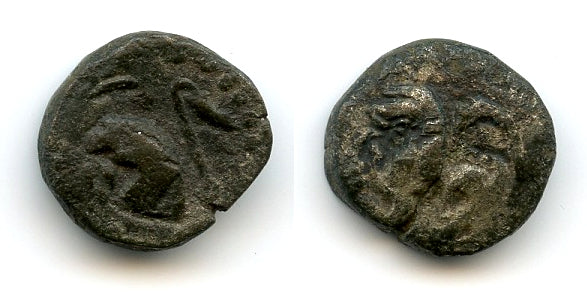
Head of lion left, umbrella above, uncertain symbol to left, fly whisk to right // Lion walking left, one paw holding sword. 16mm, 3.60 grams. Numista 108101; Cf. Zeno 334990.
Extremely rare in debased silver.
This coin is an example of a recently discovered type from central Sumatra called Jambi lion coins. Very little is known about its historical background, but these are known in copper and debased billon. Based on their find spots around Muara Kumpeh (a district in Muaro Jambi Regency in Jambi Province, Indonesia), it is currently associated with the pre-Islamic Jambi Kingdom there. Only a few coins were ever identified, this type remains very rare. They are usually made of copper and are almost always found corroded and damaged. See Zeno-310216 for a discussion on this type.
The Jambi Kingdom was a historic Malay polity located along the Batanghari River in what is now Jambi Province, Sumatra, Indonesia. It emerged as a major trading center as early as the 7th century CE, often associated with or influenced by the Srivijaya Empire, and later by other regional powers like Majapahit and Melaka. Strategically situated near the Strait of Malacca, Jambi became a key player in pepper and gold trade, attracting foreign merchants and Islamic missionaries.
By the 15th to 17th centuries, Jambi had evolved into a sultanate, embracing Islam and maintaining active relations with both regional neighbors and European powers such as the Dutch and British. It experienced periods of independence and subjugation, notably resisting Dutch colonial expansion until the late 19th century, when it was finally brought under Dutch control. The Jambi Kingdom played a significant role in the maritime and cultural history of Sumatra, blending indigenous traditions with Indian, Islamic, and European influences.
